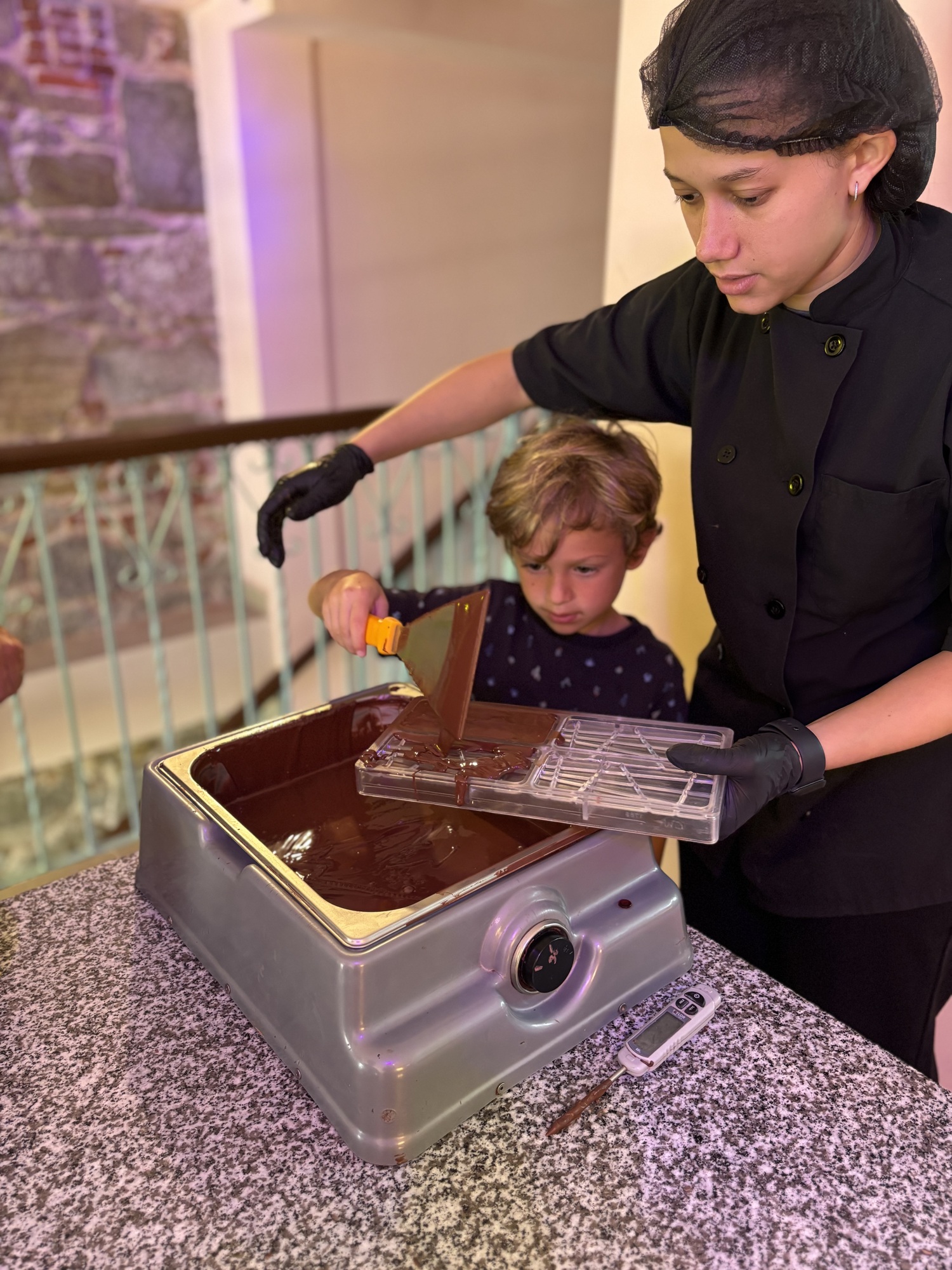
It was 90 degrees in the shade when we first arrived in Panama City, Panama, on a sunny day in April. We had decided to come at the very last minute, thanks to assistance from the luxury tour operator Black Tomato. Unlike nearly every trip I had planned in the past, I had done almost nothing to prepare. I had sent along a list of preferences, yes, but, other than that, I had remained in a blissful state of unawareness. I knew, vaguely, what we would be doing and where we would be going — Black Tomato has an app for that, which handles itinerary on the go, and other details of the trips, like contacts, and more — but I knew that we would be handled with care. And that the details were not mine to mind.
That took a lot of the pressure off, actually, because I was coming off of a strenuous few weeks of a debut book tour. On the ground, in Panama City, we were met at the gate and swept through immigration and customs with a “VIP meet-and-greet.” Not an hour later, we were in the Casco Viejo, Panama City’s second run at an old city, revived in the 1990s, thanks to a revival project and the 1997 declaration of the area as a UNESCO World Heritage Site. Now, the area is home to thriving businesses, luxury hotels, and walkable streets, as well as historic façades that have been rebuilt to reflect the deep history of the area.
Our hotel, the 159-key Sofitel Legend Casco Viejo, opened in 2023, but it remains a landmark building dating back to 1917. A to-the-studs renovation of the Spanish-Colonial structure includes mahogany wood paneling, clawfoot tubs (and bespoke bath service, should you require it, as I did), and a massive, tiled map of Central America at the entrance. Butlers are part of the experience, and ours were quick to offer their services. Our duplex suite offered a balcony view of the stunning neighborhood; children’s amenities, with a sweet Little Prince theme; plenty of tropical fresh fruit; and a menu of pillow choices.
We spent our first afternoon in Panama by the hotel pool, where I ordered ceviche — a must — and a piña colada — not a local drink by any stretch of the imagination. The aquamarine water looks out onto the Gulf of Panama, a water-on-water situation that’s hard to pass up, particularly in an otherwise urban landscape.
It was hard to round everyone up from the pool, but we had dinner plans, off-premises. At Fonda Lo Que Hay, one of the area’s best restaurants, my kids ordered a skirt steak big enough for a crowd — and happily finished the whole thing — while my husband and I ate ceviche with crispy corn; smoked beef tartare with black garlic; the so-called sexy clams with chili crunch; whole Caribbean prawns over coconut rice; and a corn Panamanian tortilla, gooey with melted cheese and rich with chorizo. On the street, on the walk back, we stopped for raspao, the local specialty, ice shaved from a giant block and topped with flavored syrup, condensed milk, and, sometimes, powdered cocoa malt.
The real fun in Panama City came later, on our neighborhood tour. Vincent, our guide, shepherded us through the streets on an early morning on what would be one of our most delicious adventures in Panama. Our first stop: the Geisha Experience, a tasting of the world’s most expensive — and, arguably, delicate — coffee, which we drank paired with dates, coffee flan, and pieces of chocolate. Next up, we visited Nomé Chocolate, a Panamanian chocolatier where my kids’ dreams came true. They watched liquid chocolate turn cool before them, learning about the tempering process. They filled molds themselves with offset spatulas. They shook the bubbles out and topped their homemade chocolate bars with cocoa nibs.
Then, as their homemade bars set in the chiller, they sat next to us and ate through a tasting of dark to milk chocolate, savoring the individual flavors. (Well, we did, anyway).
My kids had already run amok at the Biodiversity Museum, where they had seen images of the animals of Panama, and maps of the region and even living specimens of the fish of the area in the small aquarium. Now, at La Fishería, they sat patiently while we, their parents, ate yet another round of local ceviche (they opted for spaghetti with red sauce, ever American tourists). That was only an appetizer, it turned out. For lunch, we were off to Kaandela, one of the area’s best restaurants, complete with a tiny indoor fountain. If we thought we were in for a petite and delicate lunch, boy, were we wrong. Along came a hulking rib-eye, cooked rare and served in a meltingly hot cast iron pan, alongside a vibrant chimichurri. The fat cap was tender. The potatoes on the side smelled wispy, like smoke.
At sunset, we retreated to Ammi, the rooftop bar at the hotel, and ordered fancy drinks in fancy glasses and sat in a banquette and watched the sky turn cotton-candy pink over the gulf and thought about how far away home was, and how plush and rich and lovely everything had been in Panama: lime-marinated fish, a cool dip in a pool, the taste of pineapple juice that had come from an actual pineapple and not from a can. Everything had felt very much alive, right down to the boa constrictor we had watched swallow a squirrel whole. Well, so. That was fate. That was wild. This was a wild, colorful, delicious place, with its cotton-candy skies and its juices and its ceviche around every corner. We couldn’t wait to come back. It was hard to go. Saying goodbye, that was one thing that hadn’t appeared on our itinerary.